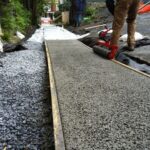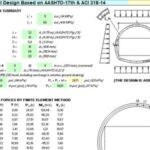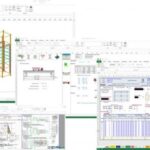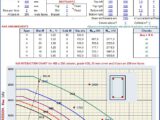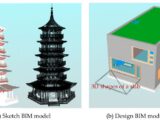
What is High Performance concrete – HPC?
15 January 2021What is High Performance concrete – HPC?
1. Definition Of High Performance Concrete:
High-performance concrete may be defined as concrete with strength and durability significantly beyond those obtained by normal means. The required properties for concrete to be classiffied as high performance therefore depend on the properties of normal concrete achievable at a particular time and location.
At the present time, high-performance concrete in developed countries usually refers to concrete with 28-day compressive strength beyond 70±80 MPa, durability factor (defined as the percentage of original modulus retained after 300 freeze/thaw cycles) above 80%, and w/c below 0.35.
It is made with good quality aggregates, high cement content (450±550 kg mw-3), and a high dosage of both silica fume (5±15 wt.% of cement) and super plasticizer (5±15 l mw-3). Sometimes other pozzo-lanic materials are also used.
The high performance is achieved with the use of low w/c (0.20±0.35) as well as pozzolans to produce a dense microstructure that is high in strength and low in permeability.
Superplasticizer is added to keep the mix workable.With high cement content, the use of super-pasticizers and silica fume and the need for more stringent quality control the unit cost of high-performance concrete can exceed that of normal concrete by 30±100%.
2. When High Performance Concrete is Used:
Despite the higher material cost, the use of high-performance concrete is found to be economical for columns of tall buildings, as the amount of steel reinforcement can be reduced.
In bridges, the reduction in deck size and weight effectively increases the allowable unsupported span. For a continuous bridge, the number of piers can be reduced. In many infrastructure projects, high-performance concrete is chosen for its durability against various types of chemical (e.g., sulfate or chloride) and physical attack (e.g., abrasion).
High-performance concrete can also be produced with lightweight aggregates. However, the aggregate needs to be very carefully chosen to make sure it is sufficiently strong. As long as the light weight aggregateis strong enough, its use can indeed be advantageous.
By saturating their pores with water before mixing, these aggregates can act as internal reservoirs that supply water to ensure continued cement hydration and prevent auto geneous shrinkage due to self-desiccation. This aspect is of particular relevance to concrete with a very low w/c, in which the early development of high density and low permeability makes it difficult for water to penetrate uniformly forthe hydration process to continue.
Besides the production of high-performance concrete, superplasticizers are also commonly used in the production of high-workability concrete. With aslump value of 180±230 mm, high-workability concrete can be pumped rapidly over long distances, easily compacted in structures with highly congested re-inforcement, and can even be self-compacting (i.e.,requiring no external compaction effort).
With super-plasticizers, it is also possible to reduce the cement content while retaining the same workability. The possibility of thermal cracking in massive structures can therefore be reduced.
In the continual quest for improving concrete performance, it was soon realized that the size of aggregates is an important factor. By using very fine aggregates, superplasticizers, and a high dose of silica fume (about 20±30% of the cement content) concrete strength beyond 200 MPa can now be achieved by conventional techniques. One example is DSP–densified system with fine particles.
Using strongaggregates of small size (e.g., calcined bauxite withmaximum size of 4 mm), DSP with compressive strength over 250 MPa can be produced.
Reaction powder concrete (RPC) is another example. With the maximum particle size limited to 0.4 mm, the compressive strength reaches 170 MPa by 28 days under room temperature curing. Curing at 80±90∞C will further increase the strength to 230 MPa. If pressure is applied before and during setting, and curing is carriedout at 400∞C, strength as high as 680 MPa can be attained. With very high strength, both DSP and RP Care extremely brittle. Fiber reinforcement is therefore essential to prevent catastrophic failure at ultimateload.

